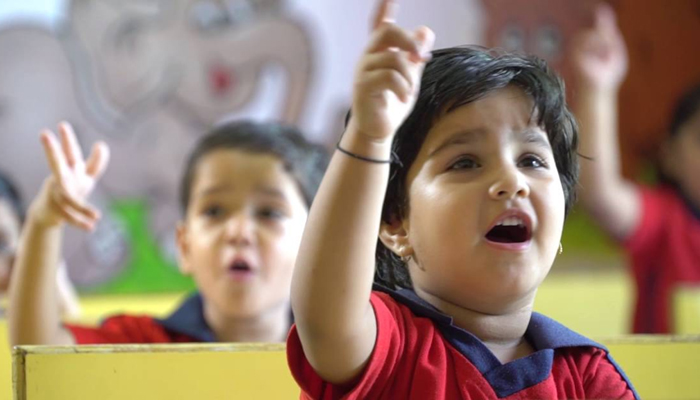Like many people’s children, my children often complain of leg pain, fatigue, back pain and shoulder pain. It has often been observed that children have marks under the straps of school bags on their shoulders. The other day I filled my eight-year-old son, a third grader, with books and copies. Baste weighed 9.5 kg, while his own weight is 25 kg. Similarly, my 11-year-old daughter, who is a fifth-grade student, weighs 35 kg and the bag was slightly above 11 kg.I hung both the beds one by one on my shoulder, so I leaned towards it and later felt pain. Then I realized that my children are not pretending to have pain in the body, but actually it is a long-standing problem that causes them to live very heavily. It is also possible that the cause of children’s pain in different parts of the body is not only heavy beds, but carrying them on their weak shoulders for 10 to 15 minutes or even more in some areas is a difficult task, which has an effect on the body. It must fall somewhere.
The weight of school bags has been a topic of debate in education circles for years. Physicians, educators, psychologists, and child counselors have also frequently cited the negative effects on the health and development of overburdened students. According to researchers, carrying heavy bags from nursery and KG to primary level is detrimental to the health and development of students. Research even suggests that in some developed countries, a pack weighing as little as 10 percent of a child’s body weight can cause dangerous negative changes in body posture, and children can develop muscle problems, including neck and back pain. causes problems. Research has also shown that these problems can persist into middle age.Lifting weights can be harmful for students.
In our neighboring country India, according to the new education policy 2020, it has been instructed to keep the weight of the litter up to 10% of the child’s weight. Khyber Pakhtunkhwa was the only province in Pakistan to legislate in 2020 regarding the weight of school bags, according to which the weight of a bag for nursery children is 1.5 kg, for the first grade 2.4 kg, from the second 5.3 kg for upto fifth grade, 5.4 kg to 6 kg for sixth to 10th grade and 7 kg for eleventh to twelfth grade was allotted, but whether it was implemented no one knows.Children with the above mentioned health problems, when they are buried under a heavy bed in the morning, they go slowly and instead of going to school with enthusiasm, they consider going to school and education as a burden like the burden of the bed. In our time, the weight of the bags was not so heavy. But nowadays parents have to helplessly watch their children carry all the burdens on their fragile shoulders. Why would children want to go to school happily when the physical pain increases under this burden?
Parents should inform the school management about the problems caused by their child’s heavy bag and the school management should also understand the concerns of the parents and the problems of the children and plan accordingly, so that all the books and No need to pick up copies and take them to school every day. The school management should also arrange separate lockers for the children in the school so that they can keep some of their books, copies, colored pencils and stationery in these lockers and take only the necessary things home with them.Homes are an unnecessary burden for young children as well as an unnecessary responsibility. This period is for children to go to and from school happily, playing and running with their peers. But the slums rob them of their enthusiasm for transportation as their slums contain books, copies, colored pencils and stationery, as well as food and drinks, which the children are responsible for protecting. Is.
I wish! May these young children happily go to school instead of being stressed and focused on their homework.The question is what is the solution? Developed countries are now moving towards teaching with the help of digital resources. Therefore, there is a need in Pakistan too that now schools should come to teaching with the help of digital resources. This will reduce the burden of carrying paper materials and books to school and students will also be able to understand different concepts better while enjoying such teaching style. For example, at times a visual learner can understand the workings of a machine better than reading from a book.
Digital resources can be preserved for long periods of time whereas paper materials are fragile to handle. Students may lose or tear or damage paper materials and books, but there is no such risk with digital resources. There is no denying the fact that not all schools may be able to afford digital resources, but in the age of visual learning and online learning, avoiding the use of the classroom can change the learning environment in a positive way.Paper materials and books are one source of education but by no means the only source. Research studies have shown that with the help of visual learning and smart classrooms, students will not only learn better, but also develop higher-level critical thinking and adaptive skills.
If smart teaching is encouraged, teachers will be better able to meet the needs of all their students. This does not necessarily mean that traditional teaching methods and materials should be completely eliminated. Although visual communication is increasingly gaining in importance, oral and written communication is still as important and necessary everywhere as it was centuries ago.Our education system and schools should not only focus on curricular learning but should also emphasize the holistic personality, overall well-being and development of students. Therefore, the size and weight of the bag should not only be determined according to international standards, but it should also be implemented so that students go to school with joy and enthusiasm and not with a heavy heart.
Visual content and smart teaching in school can help students engage, learn better, reduce homework and develop future leaders with critical thinking.



